Bail policies significantly influence how individuals rejoin communities, affecting both people and urban life. Grasping these ideas helps create environments that support social fairness and long-term sustainability. Read More
May, 2025


Bail policies significantly influence how individuals rejoin communities, affecting both people and urban life. Grasping these ideas helps create environments that support social fairness and long-term sustainability. Read More
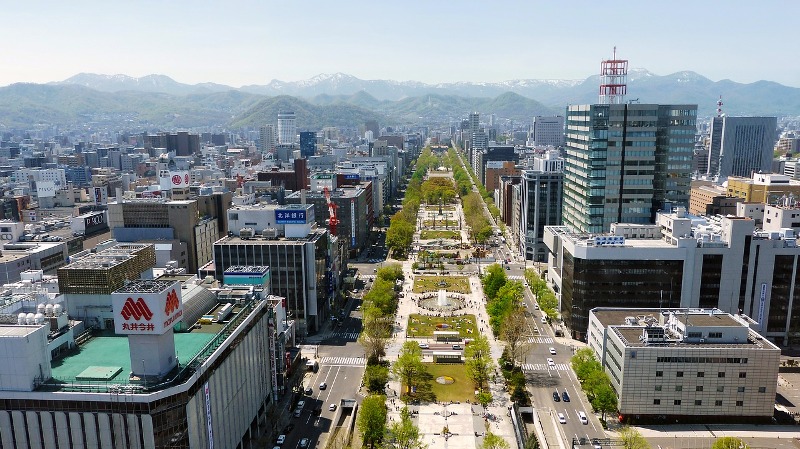
In the bustling landscape of urban development, a novel concept is taking root – the creation of urban micro forests. These small-scale green havens within cities are not only aesthetically pleasing but also serve as powerful contributors to sustainability efforts. In this exploration, we unveil the concept of urban micro forests, delving into their significance, benefits, and the transformative impact they can have on urban environments.
Urban micro forests, often referred to as pocket forests or tiny forests, are miniature ecosystems strategically planted within urban areas. These small-scale forests mimic the structure and function of natural forests but are designed to thrive in confined spaces. The goal is to create a green oasis amidst the concrete jungles of urban landscapes, promoting biodiversity and fostering a connection between city dwellers and nature.
The cultivation of urban micro forests involves a thoughtful and deliberate process. Native plant species are carefully selected to create a diverse ecosystem that mirrors the natural flora of the region. The chosen species should be resilient, requiring minimal maintenance and water once established. The close spacing of trees and plants encourages a natural competition for resources, leading to healthy growth and self-sustenance.
The benefits of urban micro forests extend far beyond their aesthetic appeal. These green pockets play a crucial role in mitigating the environmental challenges posed by urbanization. Some key advantages include:
Urban micro forests contribute to the preservation and enhancement of biodiversity within urban settings. The diverse range of plant species provides habitats for various insects, birds, and small mammals, creating a balanced and thriving ecosystem.
The trees in urban micro forests act as natural air purifiers, absorbing pollutants and releasing oxygen. This helps improve air quality in densely populated urban areas, contributing to the overall well-being of residents.
The compact nature of urban micro forests does not diminish their ability to sequester carbon. These small-scale ecosystems play a role in mitigating climate change by capturing and storing carbon dioxide, a major greenhouse gas.
Beyond the ecological benefits, urban micro forests provide a space for community engagement. Residents can actively participate in the cultivation and maintenance of these green spaces, fostering a sense of pride and connection to the environment.
While the concept of urban micro forests holds great promise, it is not without its challenges. Limited space, soil quality, and the need for community involvement can pose hurdles. However, innovative solutions such as vertical gardening, soil enhancement techniques, and community-driven initiatives can overcome these challenges and ensure the successful establishment of micro forests in urban settings.
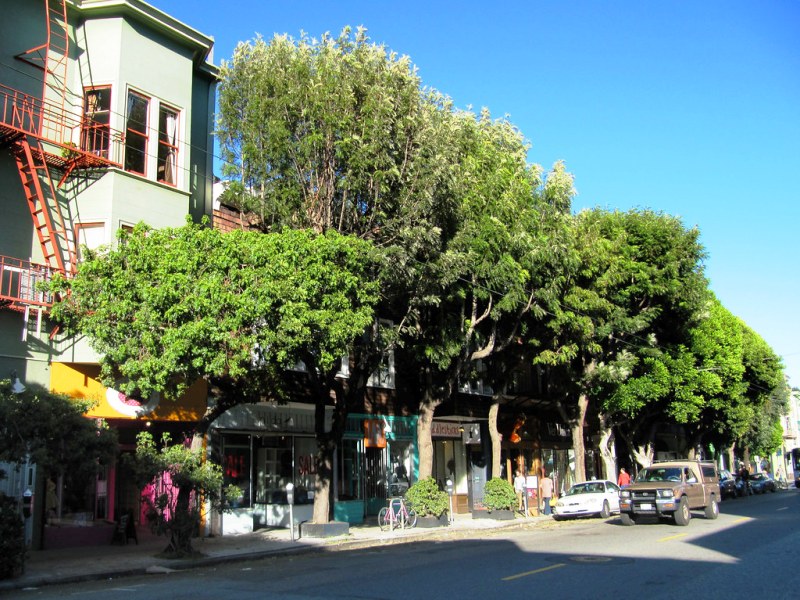
The cultivation of urban micro forests is not just a trend; it’s a call to action for sustainable urban development. City planners, environmentalists, and community members can collaborate to integrate these green pockets into urban planning. The process involves identifying suitable locations, selecting native plant species, and engaging the community in the planting and maintenance processes.
As we unveil the concept of urban micro forests, it becomes clear that these small-scale ecosystems hold significant potential in shaping the future of urban development. The benefits they offer, from biodiversity preservation to air quality improvement, align with the growing global emphasis on sustainable living.
In conclusion, the concept of urban micro forests represents a shift toward sustainable urban environments. These green havens not only contribute to the overall well-being of city residents but also serve as beacons of hope for a greener, more sustainable future. Embracing and expanding the cultivation of urban micro forests is a step toward cultivating a harmonious coexistence between urban spaces and the natural world.

In the era of environmental awareness, the journey of recyclable materials, particularly cardboard, plays a pivotal role in fostering sustainable development. From sorting and collection to processing, understanding the lifecycle of cardboard recycling unveils a cascade of eco-friendly solutions that contribute to a greener, more sustainable future.
The lifecycle of cardboard recycling begins with the sorting process. At recycling facilities, cardboard is meticulously sorted from other materials to ensure purity. This initial step is crucial for maintaining the quality of recycled cardboard, laying the foundation for a circular economy where materials are continuously repurposed.
Once sorted, cardboard embarks on its journey from homes, businesses, and industries to recycling centers. Collection efforts, whether through curbside recycling programs or drop-off centers, form the backbone of the recycling process. The collaboration between communities and recycling entities is instrumental in ensuring a steady flow of cardboard into the recycling stream.
Efficient transportation is the next chapter in the lifecycle of cardboard recycling. Collected cardboard is transported to recycling facilities where it undergoes further processing. This transportation phase emphasizes the importance of sustainable logistics, minimizing carbon footprints to align with the overarching goal of eco-friendly development.
At recycling facilities, the real magic happens during the processing stage. Cardboard is broken down into fibers through a series of steps, including pulping and refining. These fibers are then used to create new cardboard products. The processing stage not only prevents the depletion of virgin resources but also significantly reduces energy consumption compared to producing cardboard from raw materials.
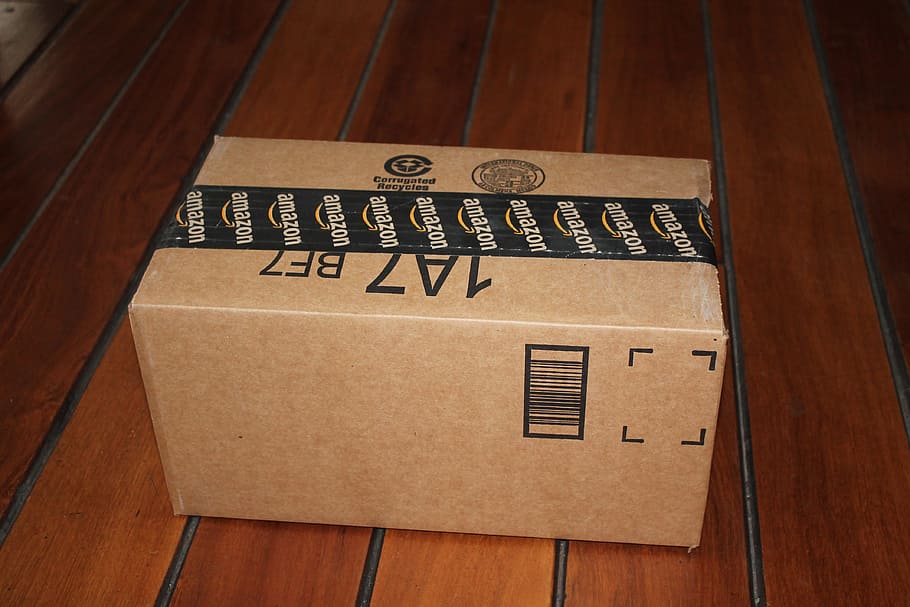
The recycled cardboard fibers find new life in the manufacturing of various products. From cardboard boxes to packaging materials, the versatility of recycled cardboard is harnessed across industries. This phase exemplifies how sustainable solutions can seamlessly integrate into our daily lives, offering products that are both eco-friendly and functional.
As consumers increasingly prioritize sustainable choices, the demand for products made from recycled materials, including cardboard, continues to rise. This surge in market demand not only drives economic growth but also reinforces the importance of recycling in sustainable development. The consumer’s role as an advocate for eco-friendly practices is vital in shaping the trajectory of cardboard recycling.
The success of cardboard recycling relies on the active engagement of communities. Educational programs, outreach initiatives, and the encouragement of responsible consumption all contribute to fostering a recycling culture. Community engagement fosters a sense of collective responsibility, reinforcing the idea that sustainable development is a shared commitment.
Perhaps the most profound aspect of the cardboard recycling lifecycle is its positive impact on the environment. By diverting cardboard from landfills, we mitigate the environmental footprint associated with waste disposal. Additionally, the energy savings in recycling compared to manufacturing from raw materials contribute to reducing greenhouse gas emissions and conserving natural resources.
Sustainable solutions, such as cardboard recycling, are the building blocks of eco-friendly development. The unveiling of the cardboard recycling lifecycle showcases a harmonious synergy between individuals, communities, and industries. From the sorting facilities to the manufacturing plants, each stage is a testament to the potential for positive change. As we navigate the lifecycle of cardboard recycling, let us recognize the power we hold to shape a future where waste transforms into wealth, and sustainable development becomes a reality.
Hope you’ve found this post helpful. Feel free to share your thoughts in the comments below.

In a world increasingly conscious of sustainability, greenwashing has become a prevalent concern. This comprehensive guide dives into the deceptive world of greenwashing, shedding light on what it is, how to recognize it, and, most importantly, how to steer clear of it. If you’re dedicated to sustainable development, this article is your indispensable resource.
Greenwashing refers to the misleading and false claims made by companies regarding the environmental and ethical qualities of their products or practices. It’s a marketing tactic that capitalizes on the growing demand for eco-friendly and socially responsible products, often leaving consumers misled and deceived.
Behind greenwashing lies the motive for profit and marketability. Companies engage in greenwashing to enhance their public image and attract environmentally conscious consumers without making substantial changes to their practices.
One common way greenwashing occurs is through deceptive labeling. Companies may use phrases like “natural,” “eco-friendly,” or “green” without providing substantial evidence to support these claims. Scrutinizing product labels is the first step in spotting greenwashing.
Beware of vague and undefined terms. Phrases like “environmentally responsible” or “green technology” are often used without clear definitions or standards. Genuine eco-friendly products come with transparent explanations.
Another tactic is the use of images unrelated to the product’s actual environmental impact. A picture of a lush forest on a detergent label doesn’t guarantee the product’s eco-friendliness. Always look for concrete evidence of a product’s green attributes.
One of the most reliable ways to verify a company’s sustainability claims is to check for legitimate certifications. Labels like Fair Trade, USDA Organic, and ENERGY STAR are recognized standards that ensure a product or practice aligns with specific sustainability criteria.
Trust companies that are transparent about their practices and are accountable for their environmental impact. Look for businesses that openly share their sustainability reports, goals, and progress.
Greenwashing erodes consumer trust. When individuals discover they’ve been misled by false claims, they become skeptical of all eco-friendly products, including those that are genuinely sustainable.
The prevalence of greenwashing hinders the progress of legitimate sustainability efforts. It diverts attention and resources away from businesses genuinely committed to making a positive impact.
The first step in the fight against greenwashing is education. Familiarize yourself with common deceptive tactics and misleading phrases. Stay informed about sustainability standards and certifications.
As a consumer, you have the power to demand transparency. Ask companies for evidence of their claims and don’t settle for vague answers. Encourage businesses to be more open about their practices.
Choose to support businesses that genuinely prioritize sustainability. By purchasing from responsible companies and boycotting greenwashers, you contribute to a more sustainable marketplace.
One of the most effective ways to combat greenwashing is to reduce consumption. By buying fewer products and making more intentional choices, you reduce the power of deceptive marketing.
Consider secondhand items or products from businesses with proven track records of sustainability. Thrift stores, sustainable fashion brands, and eco-conscious manufacturers offer alternatives.
A greenwashing-free future is possible through collective action. As consumers demand honesty and businesses prioritize authentic sustainability, we move closer to a world where greenwashing becomes a relic of the past.
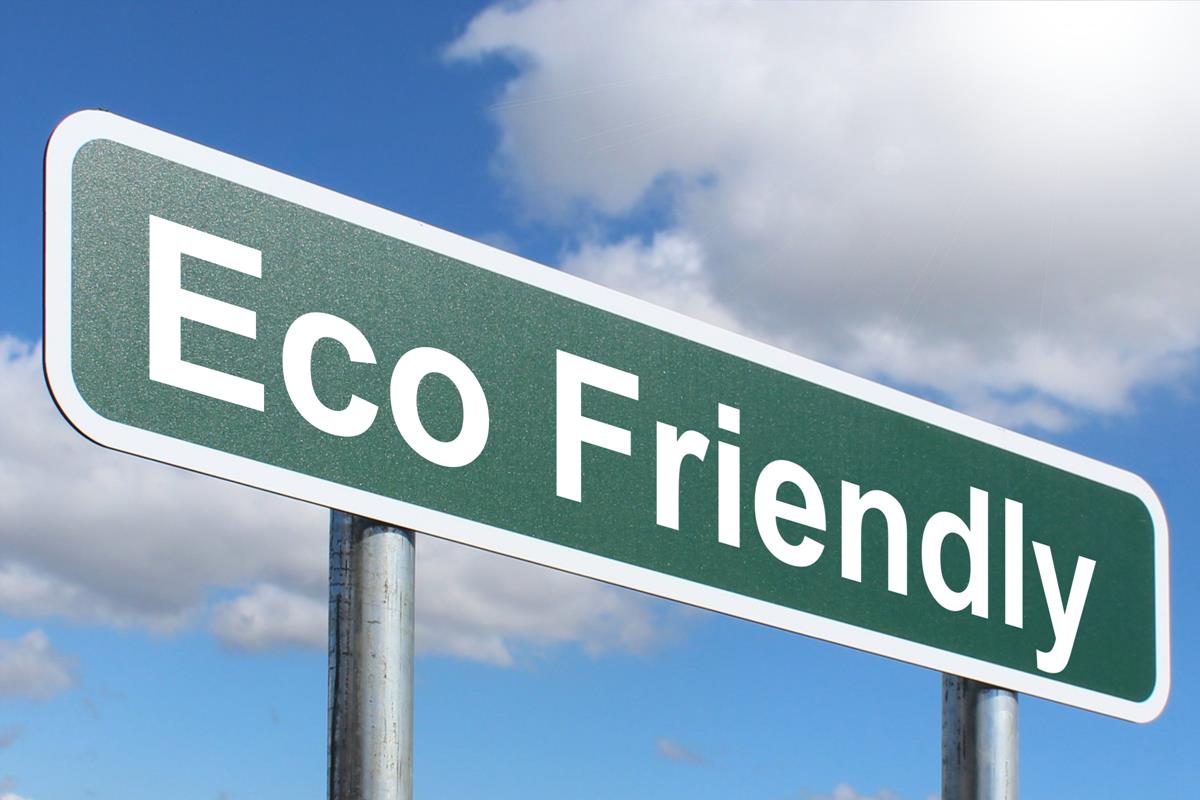
In a world where sustainability is an ever-growing concern, the battle against greenwashing is more important than ever. As responsible consumers and advocates for sustainable development, we hold the power to discern fact from fiction, and authenticity from deception. By being informed, demanding transparency, and making conscientious choices, we contribute to a marketplace where greenwashing is no longer a profitable strategy.
In this journey towards a greener world, the eradication of greenwashing is an essential step. Together, we can create an environment where genuine sustainability thrives, and businesses are held accountable for their impact. So, let’s continue to decipher, detect, and evade greenwashing, paving the way for a future where eco-friendly truly means eco-friendly.
Remember, the choices you make matter, not just for you, but for the planet we all call home.
Stay informed, stay vigilant, and stay sustainable.
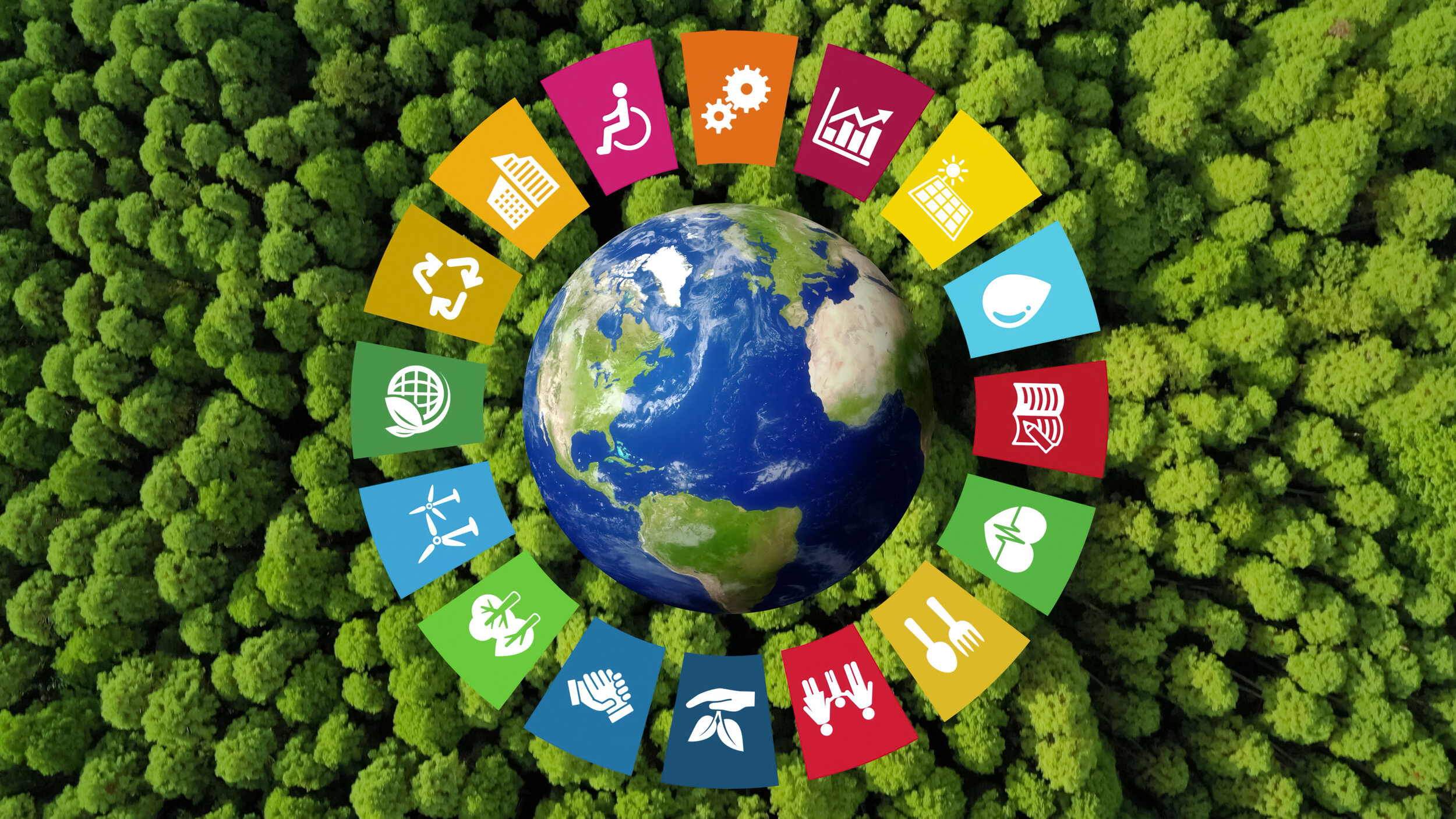
Sustainable development isn’t just a buzzword; it’s the crucial path forward for our planet and future generations. In this article, we’ll explore what sustainable development means, why it’s vital, and how you can be an essential part of this journey toward a more sustainable world.
Sustainable development seeks harmony between environmental protection, economic growth, and social progress. It aims to meet today’s needs without compromising the ability of future generations to meet their own. This concept, often summarized as “people, planet, profit,” underpins global efforts to address pressing global challenges.
Preserving the environment is a cornerstone of sustainable development. It involves reducing emissions, conserving biodiversity, and promoting sustainable practices. By safeguarding the environment, we secure clean air, water, and a stable climate for the future.
One of the central pillars of sustainable development is environmental protection. This means not only reducing greenhouse gas emissions but also preserving the Earth’s rich biodiversity. Sustainable development recognizes that the natural world is not just a backdrop but a foundation of our well-being.
Environmental protection isn’t a distant goal. It’s about ensuring that our planet remains habitable for future generations. It’s about securing the foundations of life itself. As stewards of this planet, it’s our responsibility to take actions that protect and rejuvenate the environment.
Economic growth is another pillar of sustainable development. It doesn’t mean sacrificing progress. Instead, it encourages responsible business practices, fair trade, and green investments. When done right, economic growth reduces poverty and enhances the quality of life.
Sustainable economic growth isn’t just about the bottom line. It’s about creating businesses that consider their impact on the environment and society. It’s about fair wages, ethical sourcing, and investments in renewable energy and green technologies. Such growth benefits not only shareholders but also employees, communities, and the planet.
Balancing economic growth with sustainability is not just an idealistic notion. It’s a pragmatic approach that recognizes the interconnectedness of our global economy. By investing in sustainable industries and practices, we can create jobs, drive innovation, and ensure that prosperity is shared among all segments of society.
Social progress is equally important. Sustainable development aims to create inclusive societies by reducing inequality, ensuring access to education and healthcare, and promoting gender equality. It seeks to build communities where everyone can thrive, regardless of their background.
Inclusivity lies at the heart of social progress. Sustainable development is about creating societies where opportunities are available to all, regardless of their socio-economic background, race, or ethnicity. It’s about reducing disparities and providing equal access to essential services like education and healthcare.
Gender equality is a crucial aspect of social progress. When women and men have equal opportunities and representation, it not only benefits individuals but also contributes to the overall well-being and resilience of societies. Sustainable development recognizes that gender equality is not only a fundamental human right but also a pathway to a more just and sustainable world.

Your life is intricately linked to the global ecosystem. Sustainable development ensures a better quality of life for you and future generations. It guarantees clean air, water, and a stable climate.
So, why should you care about sustainable development? Well, the simple answer is that it affects all of us. Whether you live in a bustling city or a remote village, your life is connected to the global ecosystem. The food you eat, the air you breathe, and the water you drink are all impacted by the choices we make as a society. By embracing sustainable development, we can ensure a better quality of life for ourselves and future generations.
Sustainable development isn’t just an abstract concept. It’s about improving your quality of life. It’s about having access to clean air and water, nutritious food, and a stable climate. It’s about living in a society where opportunities are available to all, regardless of their background.
Now, let’s get practical. How can you contribute to sustainable development in your daily life? Here are some simple steps you can take:
Remember, sustainable development isn’t just the responsibility of governments or large corporations. It’s a collective effort that involves each and every one of us. By making conscious choices in our daily lives and advocating for positive change, we can contribute to a more sustainable and equitable world.
Challenges include overcoming entrenched interests and changing habits. However, the rewards are immense: a world with clean air, water, reduced poverty, and opportunities for future generations.
It’s important to acknowledge that the path to sustainable development is not without its challenges. It requires overcoming entrenched interests, changing long-standing habits, and making difficult choices. However, the rewards are immense. A sustainable world is one where we can enjoy clean air and water, where poverty and inequality are reduced, and where future generations have the opportunity to thrive.
The challenges of sustainable development may seem daunting, but the rewards are enormous. A sustainable world is a world where we can breathe clean air, drink safe water, and enjoy the beauty of a biodiverse planet. It’s a world where prosperity is shared, and no one is left behind. It’s a world where future generations can inherit a planet that’s just as vibrant and abundant as the one we know today.
To wrap things up, sustainable development isn’t just a concept; it’s a vital journey for all of us. By embracing sustainable practices in our daily lives and advocating for positive change, we can create a world where people, planet, and profit are in harmonious balance. Your role is crucial on this journey toward a more sustainable future. Together, we can make a difference and create a world where people, planet, and profit are in harmonious balance.

Sustainable development is the concept that defines the need for transition and change that our planet and its inhabitants need to live in a more equitable, healthy, and environmentally friendly world.
A model for the organization of society:
Sustainable development comes from the combination of two words, which, put together, define a model of the organization of society.
By development, we mean the improvement of the performances (economic, social, etc…) of a society.
The term sustainable characterizes something that lasts, that is stable and resistant.
The combination of the two words defines sustainable development: the improvement of the performance of a society to make it stable in time.
Sustainable development is a way of organizing society to meet the needs of the present as effectively as possible without compromising the ability of future generations to meet their own needs. Today, this transition to a more sustainable model is necessary to live in a more equitable world and to preserve our planet and its natural resources.
The model of a sustainable society is based on fundamental pillars and principles.
Sustainable development implies a mode of organization based on 3 essential pillars:
The environmental quality of human activities to limit environmental impacts and preserve ecosystems and natural resources in the long term.
Social equity ensures that all members of society have access to basic resources and services (education, health, food, housing, etc.) to meet humanity’s needs, reduce inequalities and maintain social cohesion.
Economic efficiency by reducing extreme poverty and guaranteeing employment for the greatest number of people in an economic activity that pays a decent wage. A sustainable economy is a healthy management of human activities without harming humans or the environment.
These 3 pillars make up the challenges of sustainable development. These pillars are accompanied by fundamental principles to achieve a more sustainable society.
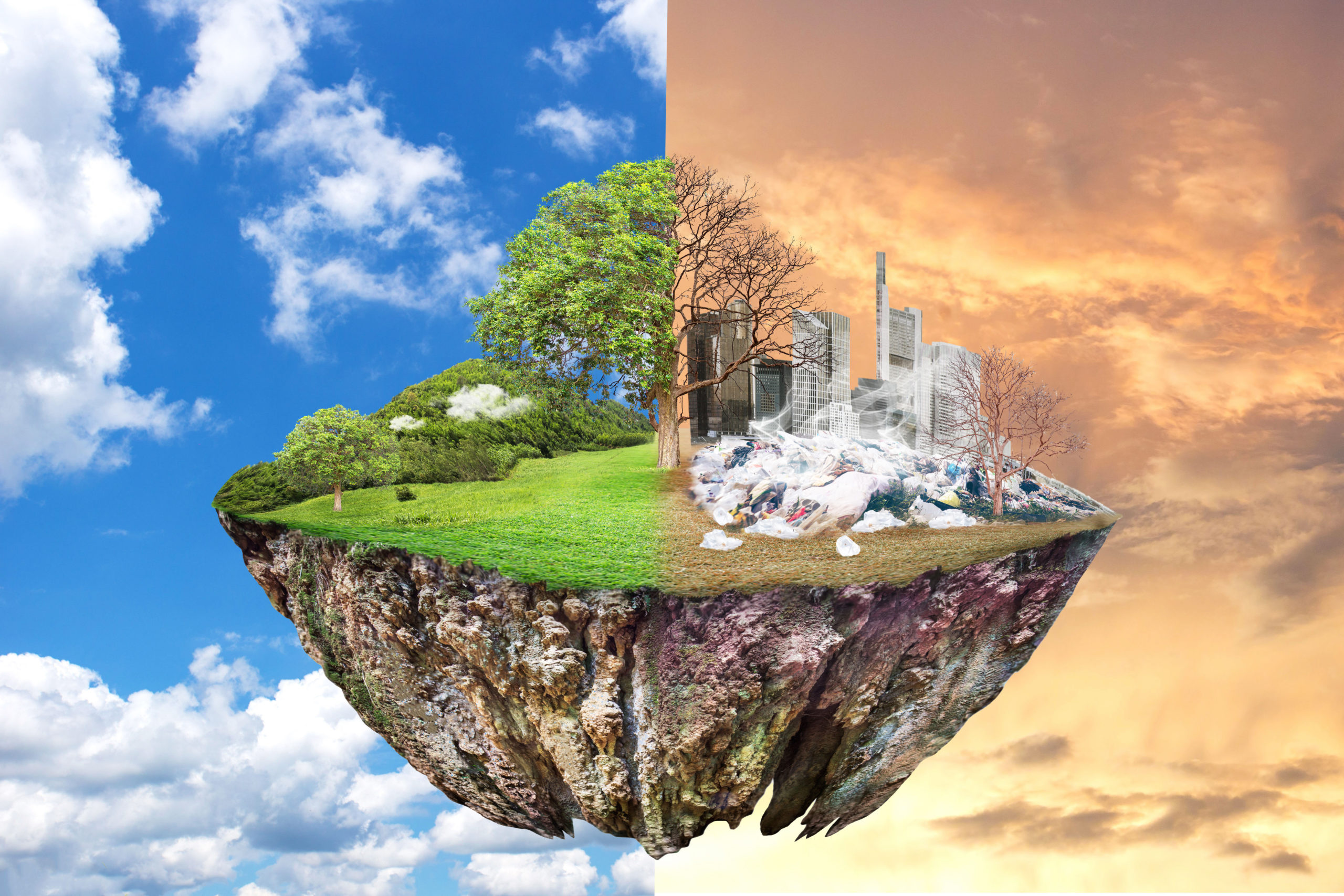
Solidarity between countries, peoples, generations, and members of society. For example: save raw materials so that the greatest number of people can benefit from them.
Precaution in decisions in order not to cause catastrophes when we know that there are risks to health or the environment. For example: limiting CO2 emissions to slow down climate change.
Participation of everyone, regardless of their profession or social status, ensures the success of sustainable projects. For example: setting up children and youth councils.
Responsibility of everyone, citizen, industrialist, or farmer. So that whoever damages, degrades, and pollutes repairs. For example: make the industries that pollute a lot pay a tax.
These principles are sometimes incompatible with the consumer society in which we live.
This is why many people (elected officials, associations, companies, individuals, young people…) are asking that our economic system be rethought to move towards a more sustainable society to preserve the planet and its resources.
Sustainable development is an urgent need and a real opportunity to redesign our society.
In 1800, there were 900 million human beings on earth. In 2020, our planet will be home to 7.8 billion people. This strong population growth is accompanied by increased demand for goods and services and production methods that lead to environmental and social disorders.
In the 1970s, many experts and scientists sounded the alarm about the impact of human activity on the planet. Since the industrial revolution, our society has experienced unprecedented development, but without really measuring the consequences of the evolution of its lifestyle. To this have been added:
the acceleration of exchanges with the rest of the world (globalization);
the increase in inequalities between rich and developing countries;
the demographic growth forecasts aim at 10 billion inhabitants on the planet by 2100.
Today, 80% of natural resources are consumed by 20% of the world’s population. This creates areas of great wealth and great poverty. In some areas of the world, the inhabitants do not have access to drinking water, health care, education, and a dignified job.
But how can we ensure access to food and drinking water, health, and education for all? How can we ensure the protection of biodiversity and fight against climate change?
This is why finding a new model of sustainable development is urgent.
Human societies will have to enter a transition and rethink all their activities. Many actors are already engaged in this transition towards a mode of operation that is more respectful of the environment and human beings.
Everyone is concerned by this transition to a new, more sustainable model of society. The different actors who are already acting, at their own level, by carrying out sustainable development actions are the citizens: children, young people, parents, etc…, the eco-delegates in high schools and colleges, educational institutions: schools, colleges, high schools, universities, campuses, associations and clubs, companies, farmers, local authorities: cities, departments, regions…, the State, the European Union, and many others…
We are all concerned with sustainable development, so let’s move together toward a new model of society that is more respectful of the environment.
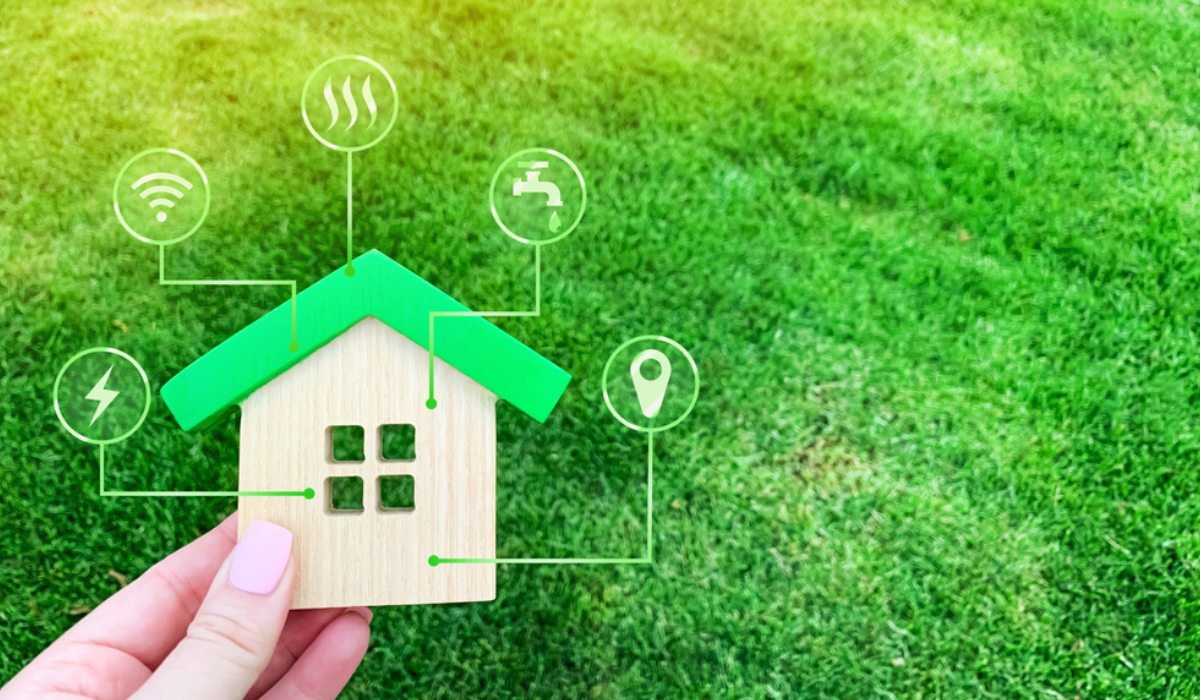
Over the past 20 years, economic growth has lifted more than 660 million people out of poverty and increased the income of millions of men and women. Yet this growth is often achieved at the expense of the environment.
Multiple failures – in markets, policies, and institutions – meaning that the exploitation of the Earth’s natural capital is often inefficient and wasteful, that the social costs of resource depletion are not adequately and appropriately addressed, and that the process is not accompanied by reinvestment in other forms of wealth. These failures threaten the sustainability of long-term growth and progress in social welfare. Moreover, despite the benefits of growth, 1.3 billion people lack electricity, 2.6 billion lack sanitation, and 900 million lack access to clean, safe water. In other words, growth has not been sufficiently shared.
Should we grow at any cost, even if it means dealing with the environmental damage later? No, there are other choices for developing countries. Many useful measures can be implemented immediately: not only are clean air, water, and solid waste management among basic needs, but many environmental policies also improve productivity and poverty reduction. If poor countries are to work to meet basic needs and increase opportunities for growth, they must do so in an environmentally sound manner. Moreover, since environmental performance does not automatically increase with income, it must, in all cases, be accompanied by public policy actions. Finally, postponing the resolution of the environmental issue may be impossible or extremely costly, either because the ecological damage will be irreparable, as in the case of biodiversity loss, or because the wait-and-see attitude and the resulting blockages will have made the cost of environmental protection policies and processes, when they are finally implemented, exorbitant.
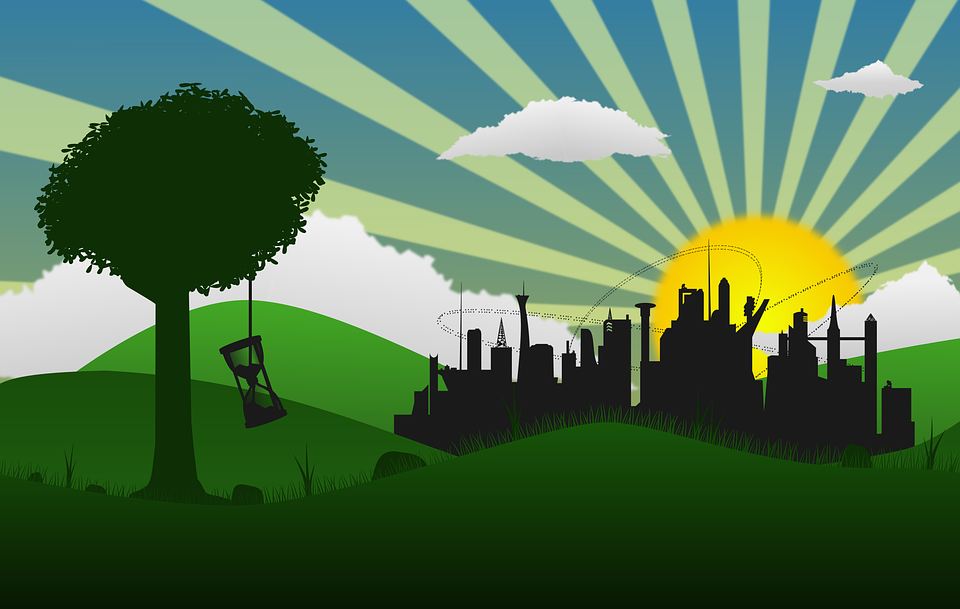
When well-designed, green and inclusive growth policies enhance social welfare and take into account the needs of both current and future generations. However, policymakers are also rightly concerned about the potential trade-offs, costs, and co-benefits of green policies for growth and employment in the short term. Careful analysis on a case-by-case basis will be needed to determine optimal strategies. However, there is strong evidence that short-term costs can be minimized through well-designed regulations and market-based policy instruments that promote low-cost means of environmental protection. Green growth can thus pave the way for more sustainable development, reconciling the urgent need for sustained growth with the imperative to move away from unsustainable growth patterns and avoid irreversible environmental damage. Green growth is not opposed to growth. It implies a change in the way we manage our economies, a change that must reflect a broader conception of what constitutes efficient and sustainable growth.
The ability and willingness to value natural capital underpin the transition to greener growth. Natural capital (water, land, air, ecosystems, and associated “environmental services”) accounts for a considerable portion of a country’s wealth. Like physical and human capital, natural capital must be invested in, maintained, and managed to be productive and contribute fully to prosperity. In order to accurately measure progress in the transition to green growth, countries will benefit from applying methods of calculation that take into account the full wealth and value of ecosystems in addition to their conventional indicators, such as GDP.
In fact, there is no single model for green growth. Strategies vary across countries, preferences, and national contexts. One country’s “best practices” need to be carefully evaluated before being replicated elsewhere. Nevertheless, all countries, rich and poor, have the opportunity to make their growth greener and more inclusive without slowing it down.
Greening growth requires policies that are inherently pro-growth and pro-environment – such as reform of energy subsidies or tariffs that protect high-polluting sectors. For governments, this means difficult pricing, regulatory, and public investment reforms on the one hand and complex changes in behavior and social norms on the other. To achieve green growth, it is important to know when to take the right policy action, even if the outcome will not be ideal from an economic perspective.
The World Bank’s Green and Inclusive Growth report presents a strategy that focuses on three main areas:
Axis 1 – Designing green and inclusive growth strategies tailored to country contexts, with an emphasis on maximizing immediate local benefits and avoiding deadlock. The optimal solutions will be different in each country, depending on institutional capacities, public transparency and accountability, and civil society’s capacity to act.
Axis 2 – Promote effective and sustainable decision-making by policymakers, consumers, and the private sector. Market-based instruments, such as pollution taxes, are important because they contribute to efficiency and stimulate innovation. A range of complementary approaches will be needed to encourage individuals to change their behavior and maximize the capacity of the private sector. Although we are still far from accurately pricing ecosystem services, we know that their value is considerable. Natural capital should be systematically included in national accounts. In February 2012, the UN Statistical Commission made the System of Integrated Environmental and Economic Accounting an international standard, establishing a generalized methodology. Neglecting natural capital, as well as neglecting human and physical capital, is detrimental to the economy and growth.
Axis 3 – Meeting initial investment needs with innovative financing tools. Given limited budgetary resources, there is an urgent need for governments and multilateral financial institutions to work to increase private sector investment in greening the economy. The establishment of public-private partnerships is essential to reduce trade barriers and achieve economic uses and decisions that are both commercially profitable and environmentally and socially sound.
Ultimately, green growth depends critically on good growth policy at, which should aim to determine fair prices and correct market failures, address coordination failures and knowledge externalities, and allocate property rights. However, it should be noted that when an economy has structural defects, green growth policies are not a panacea. Environmental protection measures cannot solve problems of macroeconomic instability, a failing labor market, an under-regulated financial system, or a hostile business environment.
Moreover, even if affordable green growth can be achieved, a country’s economy can hardly become green overnight. The rapid change would result in a sharp slowdown in growth, at least in the short and medium term. On the other hand, the prospect of a necessary and, therefore, brutal transition, in the long run, should be a strong motivation to start working on this task now.
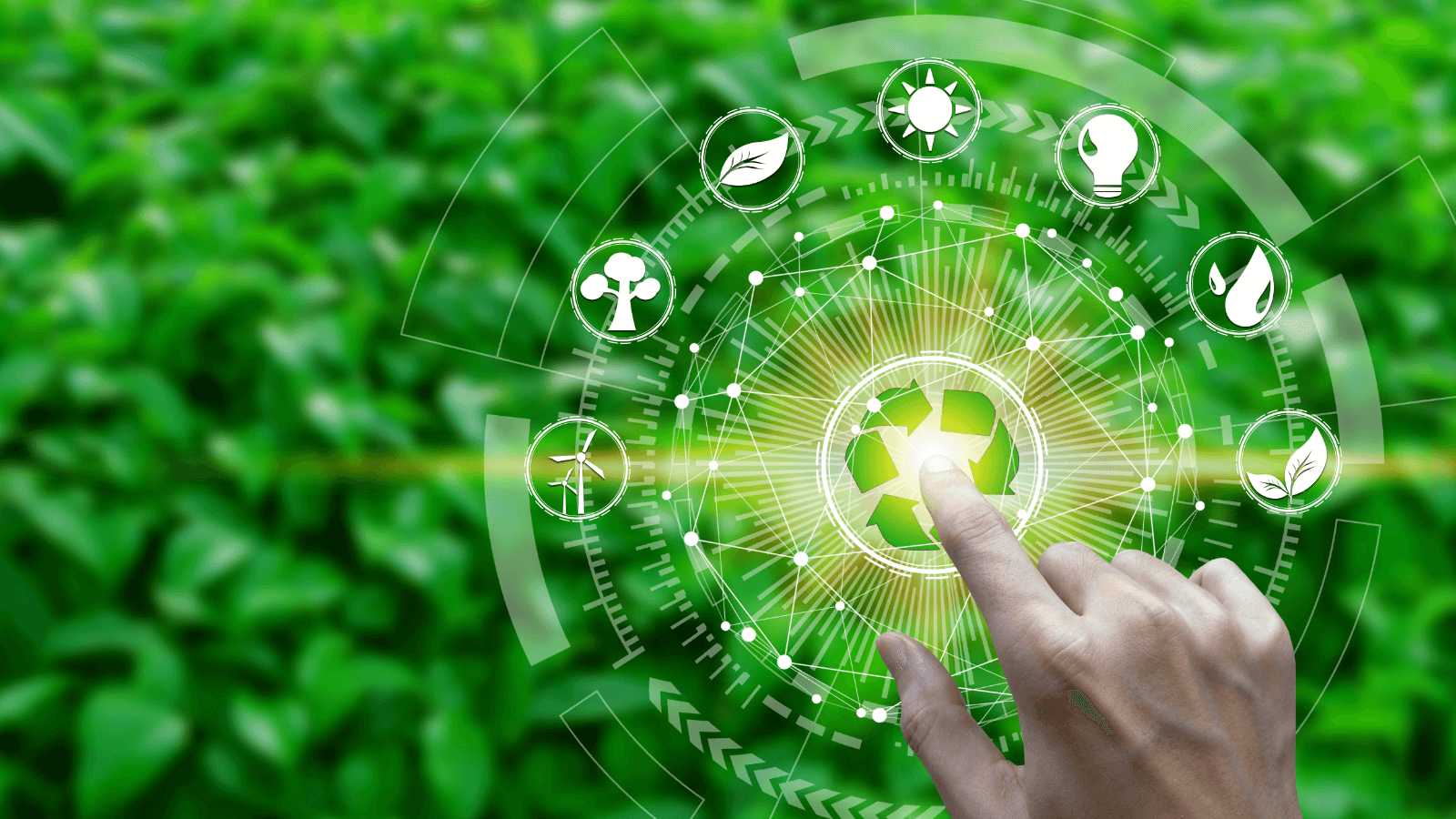
Sustainable development is the concept that defines the need for transition and change that our planet and its inhabitants need to live in a more equitable, healthy, and environmentally friendly world.
Sustainable development comes from the combination of two words, which define a model of the organization of society.
– By development, we mean improving a society’s performance (economic, social, etc…).
– The term sustainable characterizes something that is stable and resistant.
The combination of the two words defines sustainable development: the improvement of the performance of a society to make it stable in time.
Sustainable development is a way of organizing society to meet the needs of the present as effectively as possible without compromising the ability of future generations to meet their own needs. Today, this transition to a more sustainable model is necessary to live in a more equitable world and to preserve our planet and its natural resources.
The model of a sustainable society is based on fundamental pillars and principles.
A sustainable economy is a healthy management of human activities without harming humans or the environment. Sustainable development implies a mode of organization based on 3 essential pillars:
– The environmental quality of human activities to limit environmental impacts and preserve ecosystems and natural resources in the long term.
– Social equity ensures that all members of society have access to essential resources and services (education, health, food, housing, etc.) to meet humanity’s needs, reduce inequalities and maintain social cohesion.
– Economic efficiency by reducing extreme poverty and guaranteeing employment for the greatest number of people in an economic activity that pays a decent wage.
These 3 pillars make up the challenges of sustainable development. These pillars are accompanied by fundamental principles to establish a more sustainable society.
The fundamental principles of sustainable development:
– Solidarity between countries, people, generations, and members of society. For example: saving raw materials so that the greatest number of people can benefit from them.
– Precaution in decisions not to cause catastrophes when we know there are risks for health or the environment. For example: limiting CO2 emissions to slow down climate change.
– Participation of everyone, regardless of their profession or social status, to ensure the success of sustainable projects. For example: setting up children and youth councils.
– Responsibility of everyone, citizen, industrialist, or farmer. So that whoever damages, degrades, and pollutes the environment has to repair it. For example: make the industries that pollute a lot pay a tax.
These principles are sometimes incompatible with the consumer society in which we live.
This is why many people (elected officials, associations, companies, individuals, young people…) are asking that our economic system be rethought to move towards a more sustainable society to preserve the planet and its resources.
Sustainable development is an urgent need and a real opportunity to redesign our society.

In 1800, there were 900 million human beings on earth. In 2020, our planet was inhabited by 7.8 billion people. This strong population growth is accompanied by increased demand for goods and services and production methods that lead to environmental and social disorders.
In the 1970s, many experts and scientists sounded the alarm about the impact of human activity on the planet. Since the industrial revolution, our society has experienced unprecedented development, but without really measuring the consequences of the evolution of its lifestyle. To this have been added :
– the acceleration of exchanges with the rest of the world (globalization) ;
– the increase in inequalities between rich and developing countries;
– the demographic growth forecasts aiming at 10 billion inhabitants on the planet by 2100.
Today, 80% of natural resources are consumed by 20% of the world’s population. This creates areas of great wealth and great poverty. In some regions, the inhabitants do not have access to drinking water, health care, education, and a dignified job.
But how can we ensure access to food and drinking water, health, and education for all? How can we protect biodiversity and fight against climate change?
This is why it is urgent to find a new model: sustainable development.
Human societies will have to enter a transition and rethink all their activities. Hopefully, many actors are already engaged in this transition towards a mode of operation that is more respectful of the environment and human beings.
Everyone is concerned by this transition to a new, more sustainable model of society. The different actors who are already acting, at their own level, by carrying out sustainable development actions are :
US and international citizens: children, young people, parents, etc…
The eco-delegates in high school and college
Educational institutions: schools, colleges, high schools, universities, campuses
Associations and clubs
Companies
Farmers
Local authorities: cities, departments, regions…
The State
The European Union
The United States
And many others…
Hope this post has been informative to you. Remember to jot down a few words in the comments below. We are all concerned with sustainable development, so let’s move towards a new model of society that is more respectful of the environment.

Sustainable development is the concept that defines the need for transition and change that our planet and its inhabitants need to live in a more equitable, healthy, and environmentally friendly world.
Sustainable development comes from the combination of two words, which define a model of the organization of society.
– By development, we mean improving a society’s performance (economic, social, etc…).
– The term sustainable characterizes something that is stable and resistant.
The combination of the two words defines sustainable development: the improvement of the performance of a society to make it stable in time.
Sustainable development is a way of organizing society to meet the needs of the present as effectively as possible without compromising the ability of future generations to meet their own needs. Today, this transition towards a more sustainable model is necessary to live in a more equitable world and to preserve our planet and its natural resources.
The model of a sustainable society is based on fundamental pillars and principles.
A sustainable economy is a healthy management of human activities without harming humans or the environment. Sustainable development implies a mode of organization based on 3 essential pillars:
– The environmental quality of human activities to limit environmental impacts and preserve ecosystems and natural resources in the long term.
– Social equity ensures that all members of society have access to essential resources and services (education, health, food, housing, etc.) to meet the needs of humanity, reduce inequalities and maintain social cohesion.
– Economic efficiency by reducing extreme poverty and guaranteeing employment for the greatest number of people in an economic activity that pays a decent wage.
These 3 pillars make up the challenges of sustainable development. These pillars are accompanied by fundamental principles to achieve a more sustainable society.

– Solidarity between countries, peoples, generations, and members of society. For example: saving raw materials so that the greatest number of people can benefit from them.
– Precaution in decisions not to cause catastrophes when we know there are risks for health or the environment. For example: limiting CO2 emissions to slow down climate change.
– Participation of everyone, regardless of their profession or social status, to ensure the success of sustainable projects. For example: setting up children and youth councils.
– Responsibility of everyone, citizen, industrialist, or farmer. So that whoever damages, degrades, and pollutes repairs. For example: make the industries that pollute a lot pay a tax.
These principles are sometimes incompatible with the consumer society in which we live.
This is why many people (elected officials, associations, companies, individuals, young people…) are asking that our economic system be rethought to move towards a more sustainable society to preserve the planet and its resources.
Sustainable development is an urgent need and a real opportunity to redesign our society.
In 1800, there were 900 million people on earth. In 2020, our planet was home to 7.8 billion people. This strong population growth was accompanied by increased demand for goods and services and production methods leading to environmental and social disorders.
In the 1970s, many experts and scientists sounded the alarm about the impact of human activity on the planet. Since the industrial revolution, our society has experienced unprecedented development, but without really measuring the consequences of the evolution of its lifestyle. To this have been added:
– the acceleration of exchanges with the rest of the world (globalization);
– the increase in inequalities between rich and emerging countries;
– the demographic growth forecasts aim at 10 billion inhabitants on the planet by 2100.
Today, 80% of natural resources are consumed by 20% of the world’s population. This creates areas of great wealth and great poverty. In some areas, the inhabitants do not have access to drinking water, health care, education, and a dignified job.
But how can we ensure access to food and drinking water, health, and education for all? How can we protect biodiversity and fight against climate change?
This is why it is urgent to find a new model: sustainable development.
Human societies will have to enter a transition and rethink all their activities. Many actors are already engaged in this transition towards a mode of operation that is more respectful of the environment and human beings.

Climate change, believe it or not, is a pressing issue, and in 2017, UNESCO addressed it by issuing the “Declaration of Ethical Principles in Relation to Climate Change.” So, let’s learn more about the declaration and the different principles established in this treaty.
/img/iea/rV6nV2Zm6X/istock-480500124.jpg) To ensure that present and future generations are able to meet their needs, it is urgent that all States and pertinent actors:
To ensure that present and future generations are able to meet their needs, it is urgent that all States and pertinent actors:
(a)promote the implementation of the United Nations 2030 Agenda for Sustainable Development and its SDGs, especially by adopting sustainable patterns of consumption, production and waste management; by using resources efficiently; and by fostering climate resilience and low greenhouse gas emissions development;
(b)work to ensure that each person benefits from the opportunities of development, especially those who are vulnerable (see Article 10), and in this way, contribute to the eradication of poverty in all its forms and dimensions, including extreme poverty;
(c)tackle the adverse effects of climate change in areas that deserve special attention due to their humanitarian implications and consequences, including but not limited to: food, energy, and water insecurity, the ocean, desertification, land degradation, natural disasters, displaced populations, as well as the vulnerability of women, children, the elderly, and especially the poor.
(a)the importance of protecting and enhancing the world we share in a way that reflects the solidarity and interdependence among peoples of different backgrounds, and the interdependence of humankind with other organisms, ecosystems, and the environment;
(b)the well-being, livelihoods and survival of future generations which depend on our current use of resources and the resulting impacts thereof;
(c)the interconnectedness of the physical, ecological, and human systems of all countries, regions and communities across Earth.
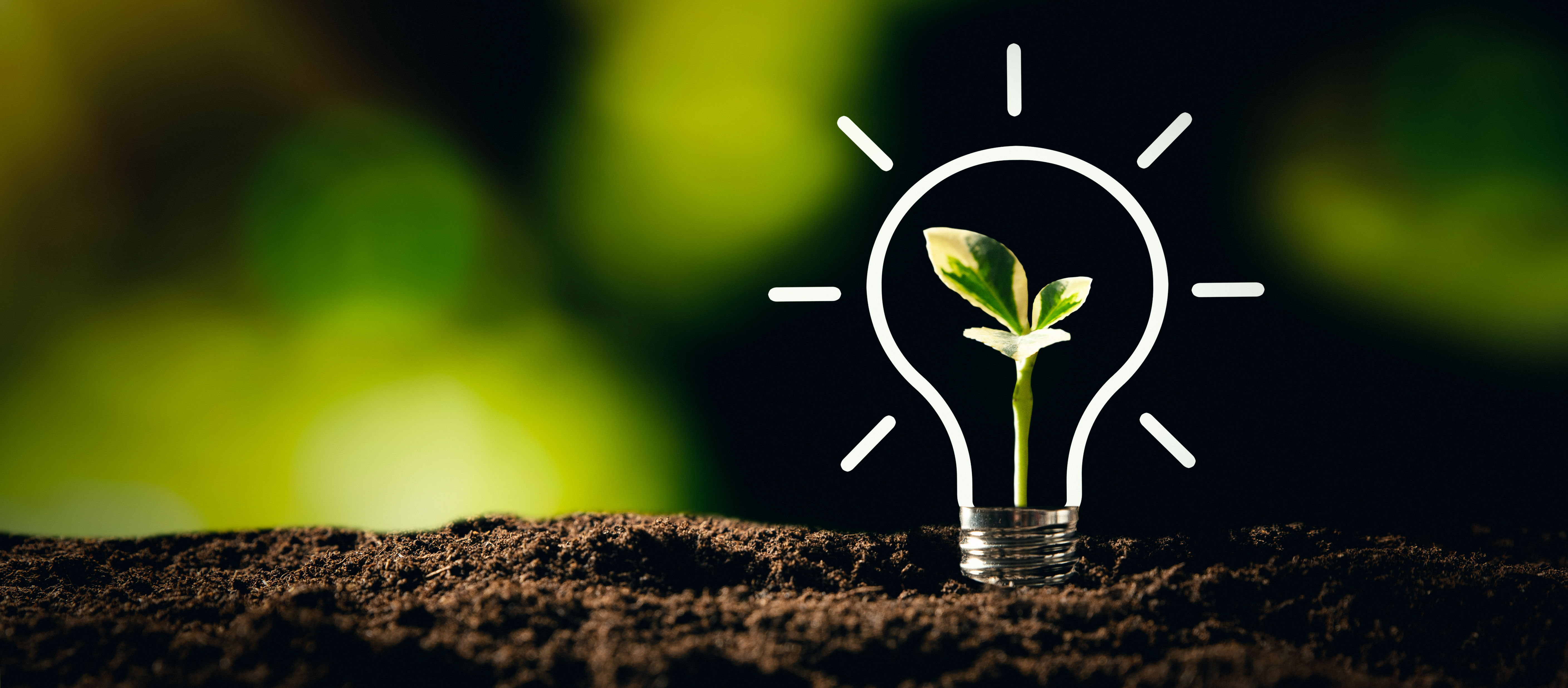
Copyright © 2025 Towards sustainability | Powered by Specia WordPress Theme